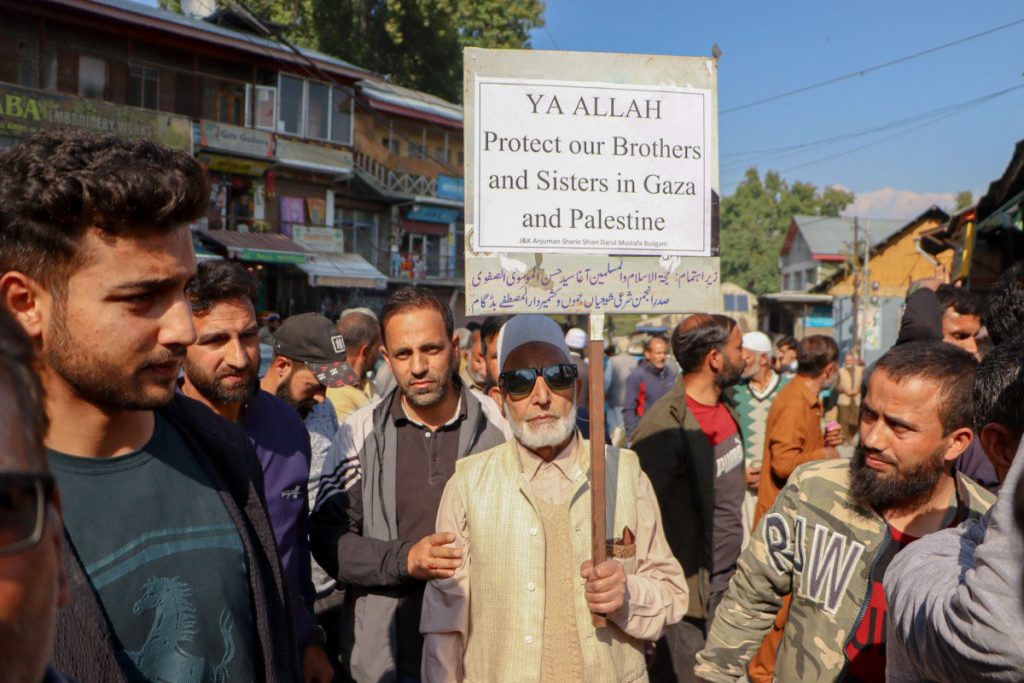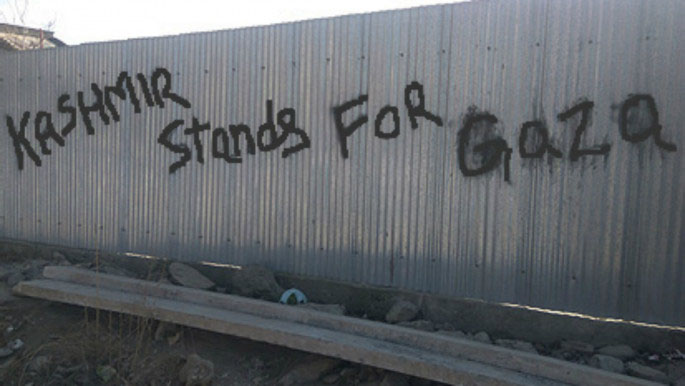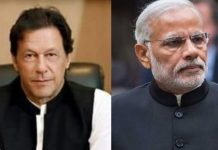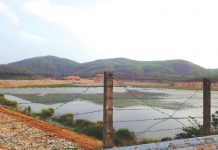
The J-K administration has taken every precaution to ensure that the valley remains free from protests related to the ongoing Israeli-Palestine conflict. It fears that any pro-Palestine rally could quickly turn into a pro-separatists stir, as has happened in the past. A report by Riyaz Wani
In 2014, when Israel invaded Gaza after Hamas fired rockets into the country, Kashmir Valley plunged into turmoil for days on end. People protested against Israel. The parts of the Valley witnessed large rallies in support of Palestine. Pro-Palestine graffiti was also scrawled across the walls.
Cut to 2023. Ever since the Israeli invasion of Gaza began following Hamas’s October 7 attack on Israel, the Valley has been silent. There have been no public protests, no stone throwing, no graffiti on walls. However, there were some protests taken out by political parties, though.
Soon after the Israeli invasion, a gathering of Kashmiri Muslims led by Shia cleric Aga Syed Akeel, staged a demonstration in central Kashmir’s Budgam district to show their support for Palestinians. The demonstrators voiced their opposition to Israel and the US, condemning what they perceived as unjust violence against the people of Gaza. They displayed their solidarity with the besieged population of this West Asian region by holding the protest outside the Shia Imambara, with protesters carrying placards bearing messages such as ‘Ya Allah – Protect our brethren in Gaza and Palestine.’
This was followed by a protest by the PDP leader Mehbooba Mufti at her party’s office which the police later foiled.
The administration has taken every care that the protests over the ongoing Israeli-Palestine conflict are not held in Kashmir. And it is for this reason that the government has disallowed Friday prayers at Srinagar’s Grand Mosque. Moderate Hurriyat chairman Mirwaiz Umar Farooq has said that he has been put under house arrest each Friday to prevent him from talking about Palestine. Even other Muslim preachers have reportedly been told not to mention Palestine in their sermons.
While this has contained public protests, the pro-Palestine sentiment runs deep in the Valley. People have been closely following the developments in Gaza, more so on social media. This has generated deep anger over the civilian killings in Gaza, which has remained pent-up with the administration stifling its public expression.
Chary administration
The administration in the Union Territory has shown itself wary of a large pro-Palestine rally which, it fears, could transform into an anti-government or pro-separatist demonstration. This has happened invariably in the past, so the government has acted proactively to discourage any public display of solidarity with Palestine.
On October 25, a high-level security review meeting was convened in Srinagar in the backdrop of the ongoing Middle East crisis to discuss the potential impact on Jammu and Kashmir.
The meeting took place at the headquarters of the 15 Corps in Srinagar and was chaired by R R Bhatnagar, Advisor to J&K Lieutenant Governor, and Lieutenant General Upendra Dwivedi, Army Commander, Northern Command, along with other top intelligence officers.
It’s primary objective was to coordinate and strategize security measures in response to the Israel-Palestine conflict. Various senior officials from the military, administration, and security agencies, including DGP J&K police Dilbag Singh and the Chinar Corps Commander, were in attendance.
During the discussions, numerous aspects related to the prevailing security situation in the Union Territory were addressed. The ongoing situation in the Middle East was deliberated upon, and contingency scenarios were discussed to ensure preparedness for any potential developments.
Over a month since the outbreak of hostilities, Kashmir has remained calm. But it is also true that the anger and resentment has remained largely subterranean.
Future fallout
Yet, the successful denial of pro-Palestinian protests by the government doesn’t guard against the potential future fallout of the war in Gaza. And this is why the security agencies made it a point to deliberate it in a meeting on October 25. It is apprehended that the militants may have been watching the progress of war right from the Hamas attack on October 7 and may be interested in what its outcome may be.
The October 7 attack launched by Hamas suddenly made Israel’s vaunted deterrence look vulnerable and it has since been trying hard to reinstate its disproportionate military superiority over Hamas. The Israeli Defence Forces have so far killed around 11,000 Palestinians, a majority of them children, and levelled entire neighbourhoods in Gaza. But it is not clear whether Israel has dented the combative power of Hamas whose members are believed to be holed up in a network of underground tunnels. This will only be clear when the war ends. The hostilities could even go on indefinitely. But it will be increasingly difficult to prolong the war considering the mounting loss of civilian lives. So far, Hezbollah, Iraqi and Yemeni militants have stopped short of joining the battle, although they have been engaged in occasional skirmishes with the Israeli army.

In contrast, however, in Kashmir, the militancy has drastically declined in recent years. The reduction in the number of militants over the last four years has considerably decreased the violence in South Kashmir where it had become increasingly concentrated over the last decade. Since the withdrawal of Article 370 on August 5, 2019, security forces have killed over 500 militants which according to some estimates has shrunk militant count to under 100 now.
The most recent estimate has put the number at 81, out of which 48 are foreigners. This is after years that the ratio between foreign and local militants has altered in favour of the former, reflecting a drastic dip in the local recruitment, which earlier replenished the depletion in the militant ranks due to the killings. However, as the influx of the foreign militants shows, the effort seems to be to compensate for the setback to the local militancy.
So, there can be no plausible comparison between what is happening in Gaza and the situation in Kashmir. The group is said to have a 40,000-strong military wing, a military academy training a range of specialisations including cyber security, and a naval commando unit. It has also put together a military infrastructure in the form of hundreds of miles of underground tunnels. This has enabled the group to mount a veritable invasion of Israel through land, water and air. And the mighty nuclear-armed military of Israel has been struggling to eliminate Hamas.
That said, the conflicts do feed off each other. The tactics adopted by militants in one part of the world are adopted in the other. This is what makes the October 7 attack on Israel a source of worry for the governments around the world. This could embolden militant groups operating in different parts of the world to stage copycat attacks, creating a dire need for the countries dealing with local conflicts to reorient their military and even political responses.












